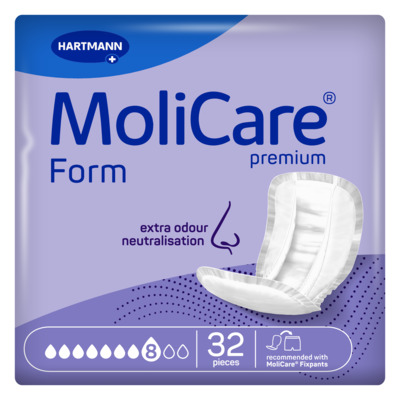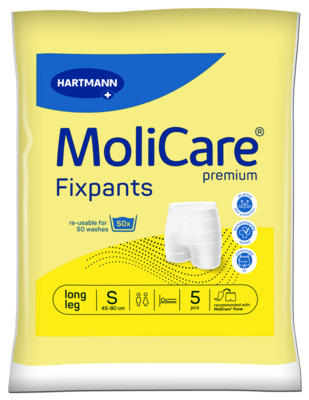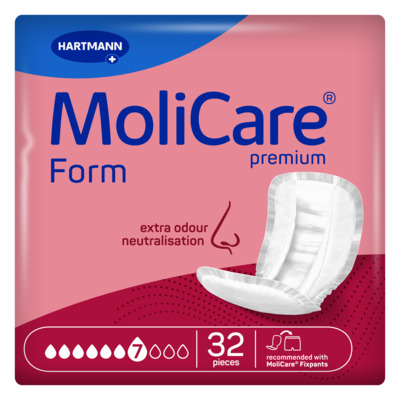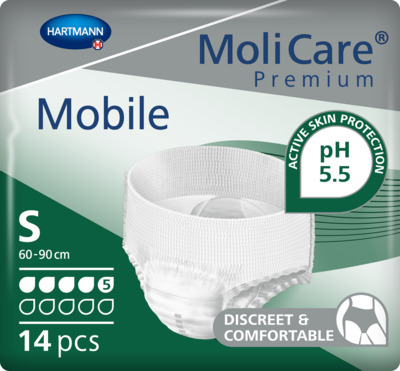Active living
Bladder control for men: Treating male urinary incontinence
Struggling with urinary incontinence often comes with more than just physical challenges, leading to a decrease in confidence and comfort. Discover how men can regain control and improve their quality of life.

Men lose bladder control naturally later in life due to weakening pelvic floor muscles. This can eventually lead to urinary incontinence. However, simple and natural methods can be integrated into your lifestyle to maintain bladder control. In this article, we will discuss how to maintain bladder control and some of the treatment options available so that men can enjoy life comfortably without worrying about potential leaks during everyday activities.
Key points:
Understand the primary causes of bladder problems in men.
Learn about lifestyle adjustments and exercises that can significantly improve symptoms.
Gain insight into how men can maintain an active and fulfilling lifestyle despite challenges with incontinence.
Bladder control for men
Risk factors for male incontinence
Several factors contribute to the risk of developing the condition:
Age: As men age, physical changes can make bladder control more challenging.
Activity levels: Low physical activity can exacerbate incontinence symptoms due to weaker overall muscle tone and increased body weight, while excessive activity might also provoke urine leakage.
Obesity: Excess weight, especially around the midsection, places significant pressure on the bladder, intensifying bladder control issues.
Medical history: Conditions such as prostate cancer, an enlarged prostate and diabetes are closely linked to the onset of urinary incontinence, and neurological conditions such as Parkinson's and multiple sclerosis can also disrupt normal urinary function.
Congenital issues: Birth defects involving the urinary system can lead to lifelong challenges with urine control.

Does gender affect incontinence?
Both men and women can suffer from urinary incontinence, but the patterns and types often differ.
Overall, incontinence is more common in women due to the physical structure of the urinary system, and this is also affected by childbirth and the menopause. However, men can also experience significant issues with incontinence. For men, incontinence is often linked to conditions such as:
Prostate issues: Having an enlarged prostate or prostate surgery can affect bladder control (benign prostatic hyperplasia)
Nocturia and urge incontinence: Men are more prone to nocturia (nighttime urination) and urge incontinence, where there is an immediate and intense urge to urinate, resulting in involuntary leakage and bed wetting.
Treatment options to improve bladder control
To improve bladder control and reduce the impact of incontinence, several lifestyle adjustments can be highly effective. Consider integrating each of the following changes into your daily routine.
Fluid management: The amount of fluid consumed can significantly affect incontinence. Instead of drinking large quantities of liquid at once, it is advisable to drink smaller amounts consistently throughout the day. This helps to regulate bladder function and reduces the risk of sudden urges that can lead to urine leakage. Consuming bladder-friendly drinks will also decrease the effects that certain fluids can play on bladder irritation.
Diet: Cutting back on foods and drinks that irritate the bladder, such as acidic and spicy foods, can be highly effective.
Bladder training: This technique involves delaying urination for a short period of time following the urge to go, if bladder weakness has been caused by passing urine too frequently. The aim is to reach a more typical timeframe of 2-3 hours between passing urine and not about extending this for any longer. It helps strengthen the muscles surrounding the bladder and urinary tract, training them to hold urine for longer periods. Over time, this practice can significantly improve bladder control.
Scheduled toilet trips: Many people question how many times a day they should wee. Scheduling visits to the bathroom can prevent urgency and frequent urination. If urinary retention is an issue, double voiding (which involves urinating, waiting a few minutes, and then trying again) can also help empty the bladder more completely, reducing incidents of leakage.
Physical exercise: Increased physical activity not only aids in weight loss but also improves overall bladder health and reduces pressure, thereby strengthening the pelvic floor muscles. Regular exercise can significantly improve symptoms of urinary incontinence.
Pelvic floor exercises: Also known as Kegel exercises, these exercises strengthen the pelvic floor muscles, which support the bladder and urethra. Regular practice of these exercises can be a game-changer for bladder control.
To do this, squeeze and lift the muscles you would use if you were trying to stop urinating, hold for a few seconds, and release. Repeat these steps several times in a row – several times a day – to achieve the best results. However, it is important to avoid carrying out these exercises by actually stopping urine mid-flow, as the aim of the exercises is simply to improve muscle tone and not to interfere with urine flow.

Gaining health advice
If you are unsure which lifestyle change and/or exercise is best for you, or you have tried them and they have not worked, it is important to consult a healthcare professional who can carry out a continence assessment to find the root cause of the incontinence and recommend the appropriate course of treatment. This treatment may involve:
Medication: Certain medications can help manage symptoms by relaxing the bladder muscles or shrinking an enlarged prostate, reducing the frequency of urine leakage.
Surgery: Where the underlying cause of incontinence is structural, so therefore cannot be improved by exercise or medication, surgical options may be appropriate to regain bladder control, such as the insertion of an artificial urinary sphincter or a sling procedure.
Physiotherapy: Physiotherapy is highly effective for managing urinary incontinence and aiding bladder control. It has been described as akin to having a personal trainer dedicated to improving the pelvic floor's functionality. One innovative physiotherapy tool is the Emsella chair, whichprovides a non-invasive treatment option by using electromagnetic technology to effectively stimulate deep pelvic floor muscles. A single session on the Emsella chair can equate to performing approximately 11,000 pelvic floor exercises, offering a substantial impact on muscle strength and bladder control.
Living with urinary incontinence
Living with urinary incontinence requires some adjustments but doesn't mean you have to give up on your active lifestyle e.g., sports with incontinence. By understanding and managing the condition, you can greatly alleviate the constraints it might impose, allowing you to continue enjoying activities such as exercising, gardening and hiking. Techniques to manage symptoms include scheduling exercises during times when you feel most secure and using protective garments that provide discretion and comfort.
Improving bladder control requires a consistent commitment to lifestyle changes or following a treatment plan recommended by a healthcare professional. This plan might include specific exercises to strengthen the pelvic floor muscles, advice on fluid intake and strategies for managing urgency. Adapting to these strategies can significantly reduce the impact of urinary incontinence on your day-to-day activities, allowing you to live with greater confidence and without the constant worry of accidents.
Does urinary incontinence affect relationships?
Urinary incontinence can have a significant impact on intimate relationships, but open communication and practical steps can mitigate uncomfortable situations.
Preparation: Avoiding bladder irritants like caffeine and alcohol before intimate moments can prevent urges and leakage. Ensuring the bladder is empty before any sexual activity is also helpful.
Protection: Using protective covers such as towels can provide peace of mind, allowing both partners to focus more on the moment and less on the possibility of leaks.
Communication: Discussing urinary incontinence openly with your partner can decrease anxiety and increase mutual understanding and support, allowing a stronger bond and more enjoyable intimacy.

Control bladder leakages with HARTMANN Direct
Our unique range of male incontinence products have been designed to provide effective management. Available in various sizes and suitable for both day and night use, our incontinence pads can be easily integrated into your routine, offering comfort and peace of mind. With our products, concerns are replaced with reassurance, and fears are replaced with a feeling of confidence that your bladder control is effectively managed. Order today to maintain control and live comfortably.
Embracing a better life
In conclusion, it is clear that weakened bladder control can pose significant challenges, but addressing the issue early can make it easier to manage and prevent additional challenges from arising if it is not treated, such as irritated skin and urinary infections.
Whether it's finding the right balance in your physical activities, adjusting for intimate relationships with your partner, or simply knowing how to stop male urine leakage effectively, the right strategy and support can make a big difference.

FAQs
What are the symptoms of bladder control problems?
Symptoms include urgency to urinate, frequent urination, nocturia (needing to urinate multiple times at night), difficulty starting urination, weak or interrupted urine stream, and involuntary loss of urine (incontinence).
When is it advisable to see a healthcare professional?
At any time for advice about the symptoms you are experiencing, to establish the possible causes of your incontinence or for a tailored treatment plan. If there has been a sudden change in urinary symptoms or implementing some lifestyle changes has had no effect.
Can exercises improve bladder control in men?
Yes, pelvic floor exercises, also known as Kegel exercises, can strengthen the muscles that help control urination. Consistent practice can improve symptoms of both urgency and stress incontinence.
NHS. (2009) Overview: Benign Prostate Enlargement. [online] Available at: https://www.nhs.uk/conditions/prostate-enlargement/ [accessed 02/10/2024]
The Urology Partnership. (2021) Emsella Chair. [online] Available at: https://theurologypartnership.co.uk/treatments/emsella-chair/ [accessed 02/10/2024]

MoliCare® Premium Form 8 Drops
<h2>Dermatologically tested incontinence pads</h2> <p>Experience comfort and protection against bladder weakness with MoliCare® Premium Form 8 Drops Pads. These pads are designed to provide you with exceptional comfort, tailored to your body's shape. Offering a range of absorbencies, they ensure the right level of protection for moderate to very severe incontinence. With elasticated seams to prevent urine from escaping from the side of the pad, these pads provide added security against leakages.</p> <h2>Absorbent Core Technology</h2> <p>At the core of these soft and breathable pads lies MoliCare®'s unique absorbent core technology, which effectively draws moisture away from your body, leaving your skin feeling dry. The soft textile-like backing sheet reduces rustling noise, while integrated odour neutralisers keep you feeling fresh and confident throughout the day. Dermatologically tested, we recommend pairing the MoliCare® Premium Form 8 Drops with our <a href="https://www.hartmanndirect.co.uk/incontinence-products/large-pads-and-fixation-pants" style="color:#0563c1; text-decoration:underline">fixation pants</a> for all-day comfort and security.</p> <h2>Convenient incontinence products</h2> <p>No matter the level of incontinence you experience, MoliCare® Premium Form 8 Drop Pads offer a convenient solution to confidently manage your needs. You can easily order our products online with the assurance of our price match promise and delivery straight to your doorstep. Enjoy free delivery on all orders over £50.</p> <p>If you require further assistance, our knowledgeable customer care team is available to answer any questions you may have. Contact us today at 0800 028 9470 and regain control of your life with MoliCare® Premium Form 8 Drops Pads.</p> <p>*Based on a study conducted among German nursing homes in 2021.</p>
MoliCare® Premium FixPants Long Leg
<h2>Washable Net Fixation Pants</h2> <p>If you are looking for a comfortable and secure way to manage incontinence, MoliCare® Fixpants Long Leg are a great option when worn with large pads. For men and women of different ages, shapes and sizes, this product is the right choice for you. These pants boast a dense fabric structure that combines air-active properties with ladder resistance, ensuring not only reliable support but also maximum comfort throughout the day. MoliCare® Premium Fixpants provide a safe and hygienic hold for MoliCare® Premium Form pads, giving you peace of mind in any situation.</p> <p>For both women and men, these fixation pants are the perfect way to keep large incontinence pads securely in place. Thanks to the two-piece system, you can count on guaranteed secure fixation, allowing you to go about your daily activities with confidence.</p> <p>Crafted from ladder-resistant dense material, these fixpants maintain their durability while preserving the pad's wetness indicator, ensuring you are always aware of its status.</p> <h2>Unparalleled Comfort</h2> <p>Indulge in the unparalleled comfort of these fixpants, featuring a soft waistband, skin-friendly air-active material, and cross-elasticated threads that provide a close fit tailored to your needs.</p> <p>With the added benefit of various leg lengths to choose from, you can experience optimum comfort and find the most suitable fit for your body shape and preferences.</p> <p>MoliCare® Fixpants are your go-to choice for reliable and comfortable fixation pants, ensuring larger incontinence pads remain securely in place. Embrace the confidence and convenience of washable fixpants, designed to provide the best support and fit for your needs. Bid farewell to worries and discomfort, and embrace worry-free and comfortable days with MoliCare® Fixpants.</p> <h2>Choosing your Size</h2> <p>Measure waist at the largest width between the waist and hips. Select the product size based on the below sizing.</p> <p>Sizes go up to 5 x extra large for larger sizing and bariatric users.</p> <ul> <li>Small: 16-32 inches (45-80cm)</li> <li>Medium: 24-40 inches (60-100cm)</li> <li>Large: 32-48 inches (80-120cm)</li> <li>Extra Large (XL): 40-64 inches (100-160cm)</li> <li>Extra Extra Large (XXL): 56-72 inches (140-180cm)</li> <li>Extra Extra Extra Large (XXXL): 63-79 inches (160-200cm)</li> <li>5X Large: 79-94 inches (200-240cm)</li> </ul>
MoliCare® Premium Form 7 Drops
<h2>Straight from the manufacturer</h2> <p>Additional benefits of MoliCare® Premium Form 7 drops include:</p> <ol> <li><strong>Enhanced Leakage Protection</strong>: The cuffs offer an additional layer of protection, ensuring extra leakage protection and providing an enhanced feeling of security.</li> <li><strong>Efficient Moisture Management</strong>: The acquisition and distribution layer acts as a barrier, promoting a drier surface with a balanced pH level, ensuring optimal comfort and maintaining skin health.</li> <li><strong>Rapid Urine Absorption</strong>: The specialised channel enables faster urine absorption, particularly during the second micturition, ensuring maximum dryness and protection.</li> <li><strong>Superior Comfort and Fit</strong>: Elastic seams ensure superior comfort and an impeccable fit, allowing you to move freely and confidently.</li> <li><strong>Premium Quality Breathable Material</strong>: Crafted from high-quality, breathable materials, these pads offer maximum leakage protection without compromising comfort.</li> <li><strong>pH-Balanced for Skin Health</strong>: MoliCare® Premium Form 7 Drops are pH-balanced to preserve and maintain your skin's health, even during prolonged use.</li> <li><strong>Wetness Indicator</strong>: Stay informed with the integrated wetness indicator, guiding you when it's time for a change, ensuring optimal hygiene and convenience.</li> </ol> <h2>Neutralise incontinence odours</h2> <p>Individually shaped to adjust to your body, MoliCare® Premium Form 7 Drops provide a comfortable fit and exceptional comfort. Available in a range of absorbencies, these large incontinence pads are ideal for moderate to very severe incontinence. Equipped with elasticated seams and fluid repellent inner cuffs, they offer added protection against leakages, providing you with peace of mind throughout the day.</p> <p>At the core of these soft, breathable pads lies MoliCare's® unique absorbent core technology, which effectively draws moisture away from your body, leaving your skin calm and dry. The soft textile-like backing sheet significantly reduces rustling noises, while integrated odour neutralisers keep you fresh and confident, no matter what your day holds. Hypoallergenic and dermatologically tested, we recommend wearing MoliCare® Premium Form 7 Drops with our fixation pants to ensure day-long comfort and security.</p>
